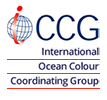Co-Chairs
Robert Frouin
Scripps Institute of Oceanography, UC San Diego, USA
rfrouin@ucsd.edu
Frédéric Mélin
EU-JRC, Italy
frederic.melin@ec.europa.eu
Liz Atwood
PML, UK
liat@pml.ac.uk
Established: April 2025
Background
It has long been recognised that there is a clear need for multi-sensor, long-term time series of ocean-colour products. The requirement arises from the need to blend multiple sensors to create time series that are longer than the life-span of individual sensors for a variety of applications, with prominent applications, including climate studies and ecosystem management, such as for fisheries. Blending multiple sensors also serves to minimise gaps in data at short time scales, such as in daily products, that is important for water quality, ecological disasters, and environmental impacts. In response to this need, many space agencies and research groups have established, or are in the process of establishing, their own multi-sensor products.
Coordination at the level of IOCCG is needed to support efforts by individual groups or space agencies on the development of consistent and global Ocean Colour long-term time series. The task force aims to reinforce these efforts, optimise return on investment, and to provide optimal technology and the best multi-sensor time series products to the community. On behalf of the IOCCG, the task force will guide users to the right products that serve their requirements and respond to community feedback to improve product quality beyond what might be possible by individual groups or agencies; support augmentation of the product suite; improve uncertainty characterisation; and provide policy guidance.
The group aims to explore and facilitate the development of a reliable, blended, and long-term ocean colour time series product. The objective is to support climate studies, operational services, and scientific research by improving the quality, consistency, and availability of ocean colour data products across multiple space missions and agencies.
IOCCG (2007). Ocean-Colour Data Merging. Gregg, W. (ed.), Reports of the International Ocean-Colour Coordinating Group, No. 6, IOCCG, Dartmouth, Canada. from Working Group on Coordination of Merged Data Sets
IOCCG (2004). Guide to the Creation and Use of Ocean-Colour, Level-3, Binned Data Products. Antoine, D. (ed.), Reports of the International Ocean-Colour Coor- dinating Group, No. 4, IOCCG, Dartmouth, Canada. from Working Group on Ocean-Colour Data Binning
Terms of Reference
- Evaluate the Current Status of Ocean Colour Products
- Assess the current ocean colour data products generated by various space agencies, their calibration processes, and differences in data processing and product quality.
- Identify sources of discrepancies, uncertainties, and biases across datasets.
- Develop Strategies for Harmonization and Blending
- Propose methodologies for generating a harmonized long-term time series, considering sensor calibration, product uncertainty, and vicarious calibration requirements.
- Explore the feasibility of generating blended products that span across different space missions, ensuring continuity and consistency of datasets.
- Identify and Address Gaps
- Identify gaps in data/metadata, processing methodologies, and infrastructure for long-term data stability.
- Recommend actions to address existing challenges, including improvements in vicarious calibration, atmospheric correction, and algorithm development.
- Support System Vicarious Calibration (SVC)
- Evaluate and recommend best practices for SVC for multi-mission time series.
- Coordinate with the Ocean Colour SVC Task Force to ensure that calibration approaches meet the accuracy and stability requirements for climate applications.
- Promote International Collaboration
- Facilitate cooperation between space agencies, institutions, and scientists to ensure the development of consistent global ocean colour data products.
- Establish frameworks for the exchange of calibration and validation data to support sensor inter-comparisons and the blending of datasets.
- Determine Resources and Infrastructure Needs
- Identify the necessary resources, tools, and infrastructure required for long-term data records, including sustained in situ measurements and support for calibration facilities such as the Marine Optical Buoy (MOBY) and HyperNav systems.
- Establish Recommendations for Data Continuity
- Develop guidelines for ensuring temporal stability and spatial consistency across missions, considering the importance of uninterrupted data records for climate and ecosystem studies.
- Recommend the development of protocols for long-term monitoring of instrument performance and degradation.
Members
- David Antoine, U. Curtin, Australia
- Brian Barnes, USF, USA
- Corinne Bourgault, CSA, Canada
- Vittorio Brando, CNR-ISMAR, Italy
- Nagur Cherukuru, CSIRO, Australia
- David Dessailly, EUMETSAT, Italy
- Bryan Franz, NASA, USA
- Robert Frouin, UCSD, USA
- Xianqiang He, SIO/MNR, China
- Veronica Lance, NOAA, USA
- Zhongping Lee, Xiamen University, China
- Frederic Melin, JRC, Italy
- Hiroshi Murakami, JAXA, Japan
- PV Nagamani, ISRO, India
- Todd O’Brien, NOAA, USA
- Myung-Sook Park, KIOST, South Korea
- Shubha Sathyendranath, PML, UK
- Carolina Tauro, CONAE, Argentina


 The sixth International Ocean Colour Science (IOCS) meeting will take place in Darmstadt, Germany from 1 – 4 December 2025, hosted by EUMETSAT and ESA with support from other agencies.
The sixth International Ocean Colour Science (IOCS) meeting will take place in Darmstadt, Germany from 1 – 4 December 2025, hosted by EUMETSAT and ESA with support from other agencies.